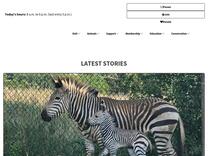Red-eyed vireo | Smithsonian’s National Zoo and Conservation Biology Institute https://nationalzoo.si.edu/animals/red-eyed-vireo
This small songbird is a common sight among the leafy woodlands of North America during the spring and summer months. It is noteworthy for its ruby-red irises and persistent singing.
After a nest site is chosen, females weave together a cup-shaped nest out of twigs

